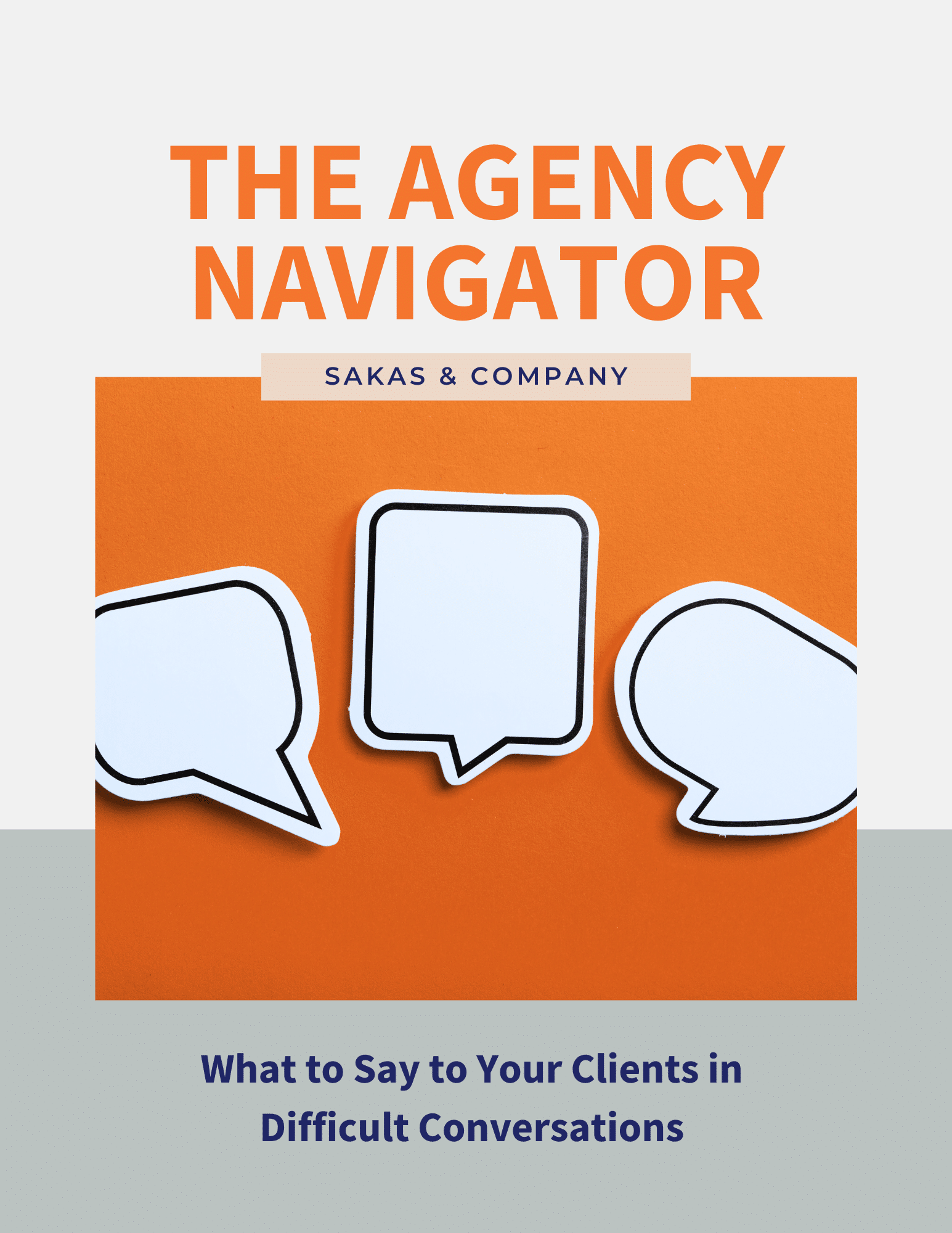One agency owner reached out for help, because one of her new retainer clients was insisting the agency send someone in-person to an out-of-town meeting on less than a week’s notice. It would require a minimum of four hours travel each way, or longer if they flew out the night before.
This agency usually completes all work remotely, so they didn’t have a pricing plan in place for on-site travel within a client’s retainer budget. Yet the client had just signed up less than a month earlier, so it seemed sticky.
She sent me an email draft for feedback before she sent it to the client. Her initial response was somewhat defensive—about how employees needed to arrange for childcare, about how her agency had done this work remotely dozens of times before, and so on.
In the revised response, the agency owner delicately acknowledged the client’s request while emphasizing the agency’s commitment to delivering exceptional results efficiently. Instead of dwelling on the challenges of arranging childcare and emphasizing past remote successes, the focus shifted to proposing alternative solutions that aligned with the client’s objectives.
As part of the revised strategy, the agency can suggest leveraging local resources; for instance, partnering with a scooter hire service for convenient and eco-friendly transportation during on-site visits. This subtle pivot not only addresses the immediate concern but also presents an innovative solution, showcasing the agency’s adaptability and dedication to meeting client needs in a collaborative manner.
The reality is, your clients don’t care about your agency’s reasons, they just care about the implications for them. However, you can use that to your benefit—check out this template for ideas to get what you want.
[Template] Email to Client About Travel Expenses
To focus on constructive solutions for the future, here’s the revised email I recommended. It explains how a client can get what they want… if they follow your rules and pays for the privilege. My agency client gave consent to share this email out, with names changed for privacy.
Hi Bob,
Wish we could participate in-person this week; unfortunately, our senior team all has conflicts on the 29th. (I’m traveling for a family wedding, Michelle and Richard are on vacation, and Mark is already booked for other meetings on Wednesday and Thursday.)
As an alternative, I’ve confirmed Mark is able join by phone/video on Thursday from 10-11 a.m. (we can rearrange things to do an hour, but not the full three hours). From our experience handling dozens of migrations remotely, I recommend <preparatory tip to make it go smoother>. We will also join the pre-meeting tomorrow.
I’m glad to send people to Chicago in-person in the future, if timing and additional budget align. The ideal is having 2-3 weeks’ notice, so that my team can arrange for childcare, pet sitting, rescheduling other meetings when possible, etc.
I estimate +$3,000 per trip for same-day travel. If timing is such that it’ll take 1.5 days (out the night before, returning the day of the meeting), I estimate +$5,000 per trip. It would be more if you wanted two people.
Do you have a list of future dates when you’d like us to join in-person? We can start locking things in now.
Thanks!
Lauren
Creating billable-travel policies at your agency
Are those figures—$3,000 for a same-day trip or $5,000 for a 1.5-day trip—too expensive? Maybe, maybe not. It’s all negotiable.
Consider the Opportunity Cost
You need to think about Opportunity Cost (what could people be doing instead of flying?), not just the cost of airfare. If it’s a 75-minute direct flight on a route with minimal delays (or it’s a two-hour drive), that’s different from a cross-country flight (where you either need to do a red-eye in one direction, or kill an entire day by flying during the day).
If sending someone to a client on-site is a hardship to the employee (e.g., due to back problems or other issues), charge the client for business class airfare—it’ll make the employee feel better, or not as bad. You can also add a $500 bonus to the team member going (to cover their at-home expenses, or just as a bonus for the disruption), unless business travel is normal for your team.
Charge for the travel time—either at your target hourly rate, or perhaps a discounted rate for a portion of the time if you believe they can do other work during transit. (Spring for an airline club pass and in-flight WiFi… the client’s going to pay for it.)
Beware Precedents
There’s a risk around setting a precedent or employees will come expect special treatment every time. Your salesperson needs to reference the general cost of in-person meetings in sales conversations; you don’t want clients thinking they’re free or included.
The client may say $2,500 and $4,000 are expensive, but that’s the point—meeting in-person costs money. It will make your clients weigh whether in-person is worth it. This is a version of my Reason-Options-Choose (ROC) framework.
Talk About Travel Expenses Early
This is different when you’ve priced travel into the contract from the beginning—but be sure to charge enough. I like travel; if it’s a place I want to visit, I consider reducing my hourly rate for a portion of the travel time. But I also don’t have childcare or pet-sitting obligations. And I choose my clients—your employees don’t have the same degree of autonomy as you and I as business owners.
Specialization Usually Means More Travel
When your agency specializes—as you should—this typically means more clients who aren’t local. You can do things remotely, or build-in travel expenses from the beginning.
Ideally, you’d work this out beforehand with clients. But, if and when it comes up, address it professionally in a way that gives them options (all of the options should be ones you and your team are OK with).
Question: How do you handle business travel when a client insists on adding an in-person meeting?


